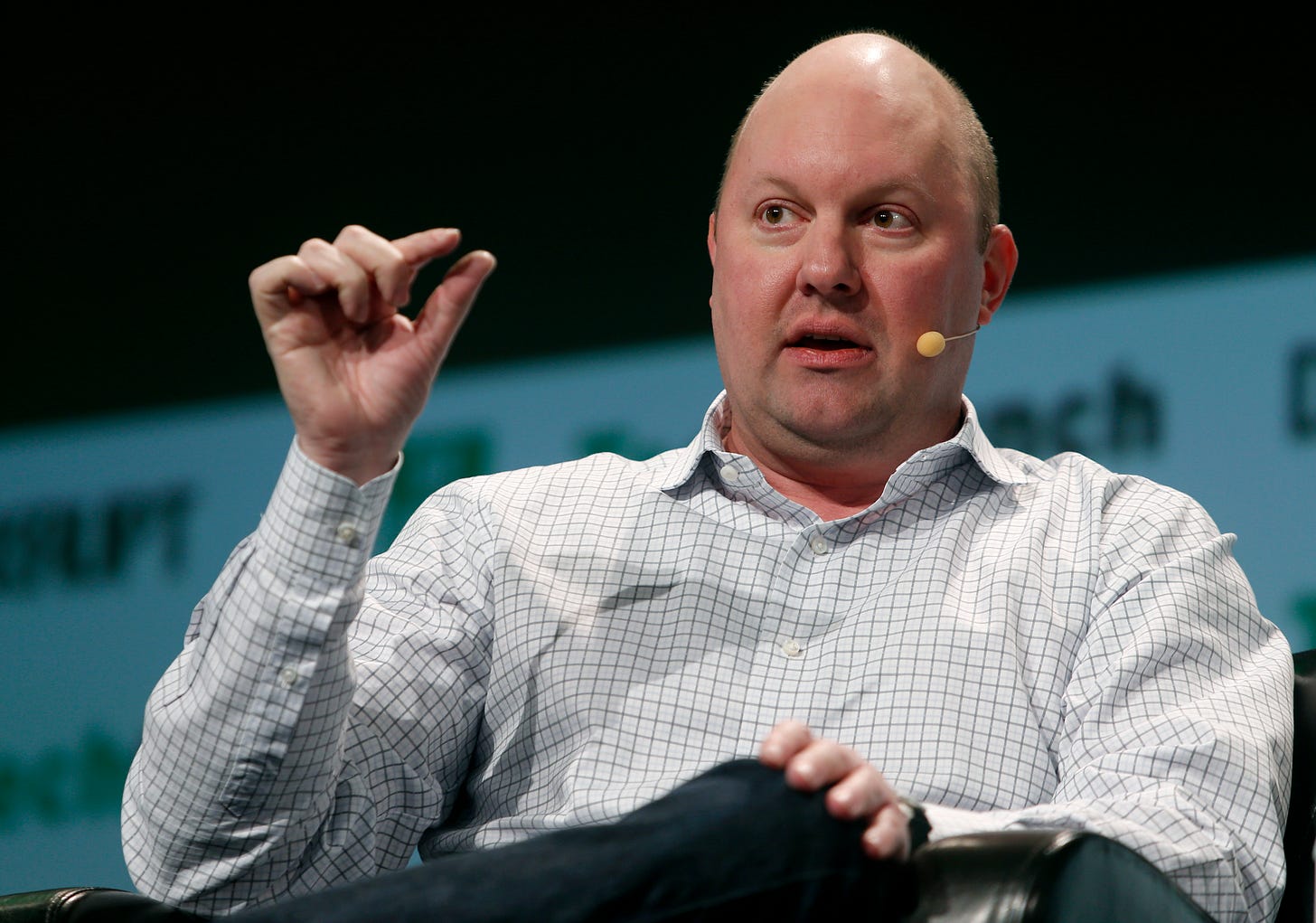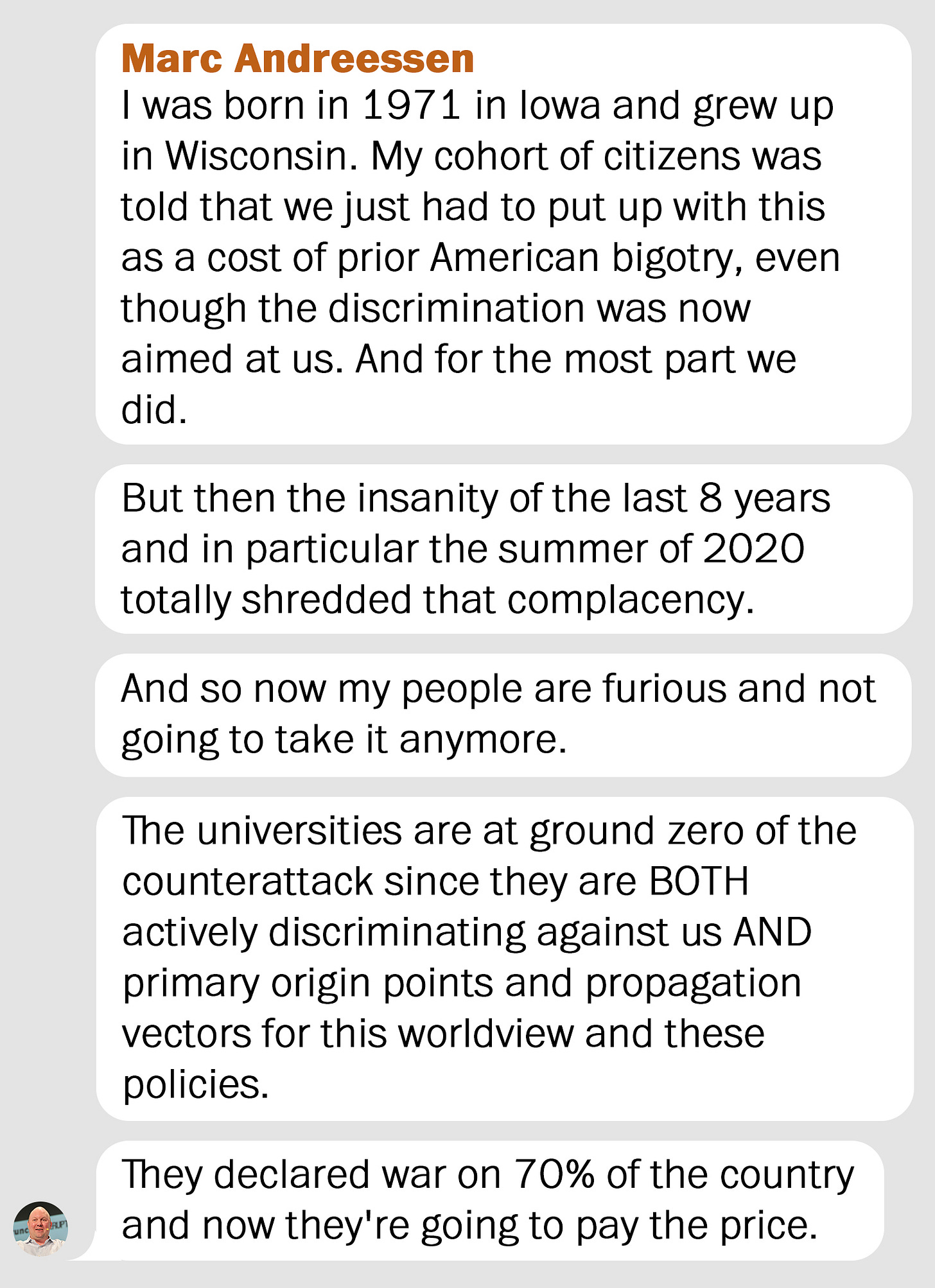Marc Andreessen and the Billionaire Victims Club
The gripes of this bigwig of the tech right don’t stand up to scrutiny.

1. White People
Over the weekend the Washington Post got hold of a text chain in which Marc Andreessen explained some facts of life to his fellow travelers in the Trump White House.
“The combination of DEI and immigration is politically lethal,” Andreessen wrote. “When these two forms of discrimination combine, as they have for the last 60 years and on hyperdrive for the last decade, they systematically cut most of the children of the Trump voter base out of any realistic prospect of access to higher education and corporate America.”
Andreessen was especially concerned about the double effects of immigration and DEI on elite universities.
I know what you’re thinking: Geez, that sounds a little bit like weird racialist thinking.
Oh friend. It’s not a little bit like that.
“They.” “My people.” “Us.” And yes, the 1970s were famously a time when discrimination was aimed at whites.
There are two things happening here. The first is the delta between Marc Andreessen’s self-mythologizing and reality. The second is the state of the real world as it exists today.
You may not know Andreessen; outside of tech circles, he’s not as famous as Elon Musk and Peter Thiel. But like them, he is part of the Silicon Valley oligarchy that has thrown in with Trumpism.
And understanding this Billionaire Victims Club is one of the keys to understanding our authoritarian moment.
2. Marc’s Kampf
It’s obvious how Andreessen views his own rise—as the story of a man who fought through a world stacked against him.1 Now let me tell you the real story.
Andreessen grew up, as he says, in Wisconsin. He then attended the University of Illinois. In 1989, out-of-state tuition + room and board at U of I was $9,312 per year.
How much of a bargain was this? That’s an inflation-adjusted $23,948 in 2025 dollars. Yet if you enroll as an out-of-state freshman at Illinois today, that will cost you $42,310.
While at Illinois, Andreessen was part of a team working on building the first graphical interface for the internet. It was called Mosaic. This project was funded by the National Science Foundation.
In 1993, Andreessen graduated, moved to California, and started a company called Netscape, which built on the (publicly funded) work he had done with Mosaic. Netscape became the world’s first commercially successful web browser. In 1999 Andreessen sold the company to AOL (at the top of the first internet bubble) for $4.3 billion.
He was 28 years old.
You can summarize the Marc Andreessen story this way:






